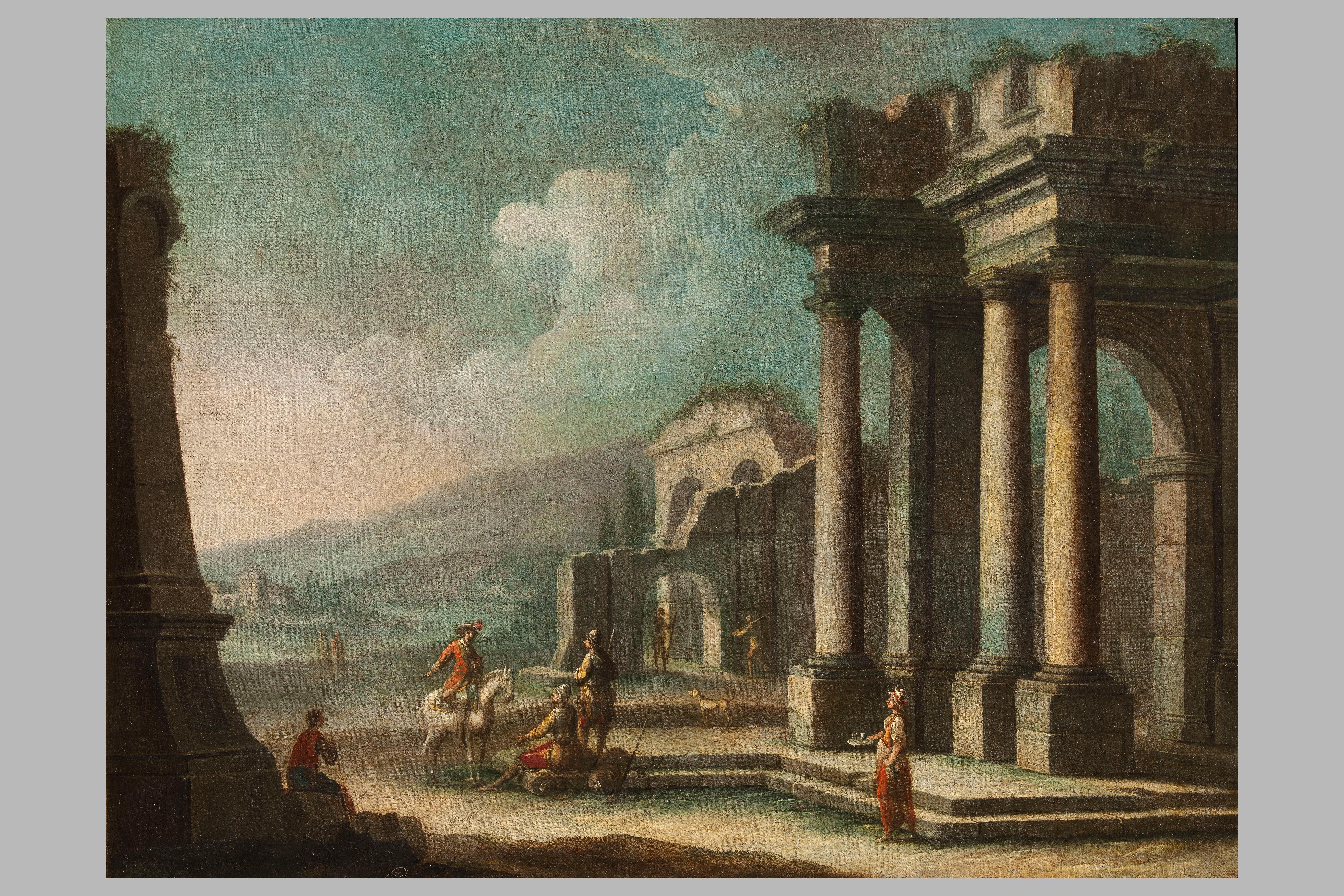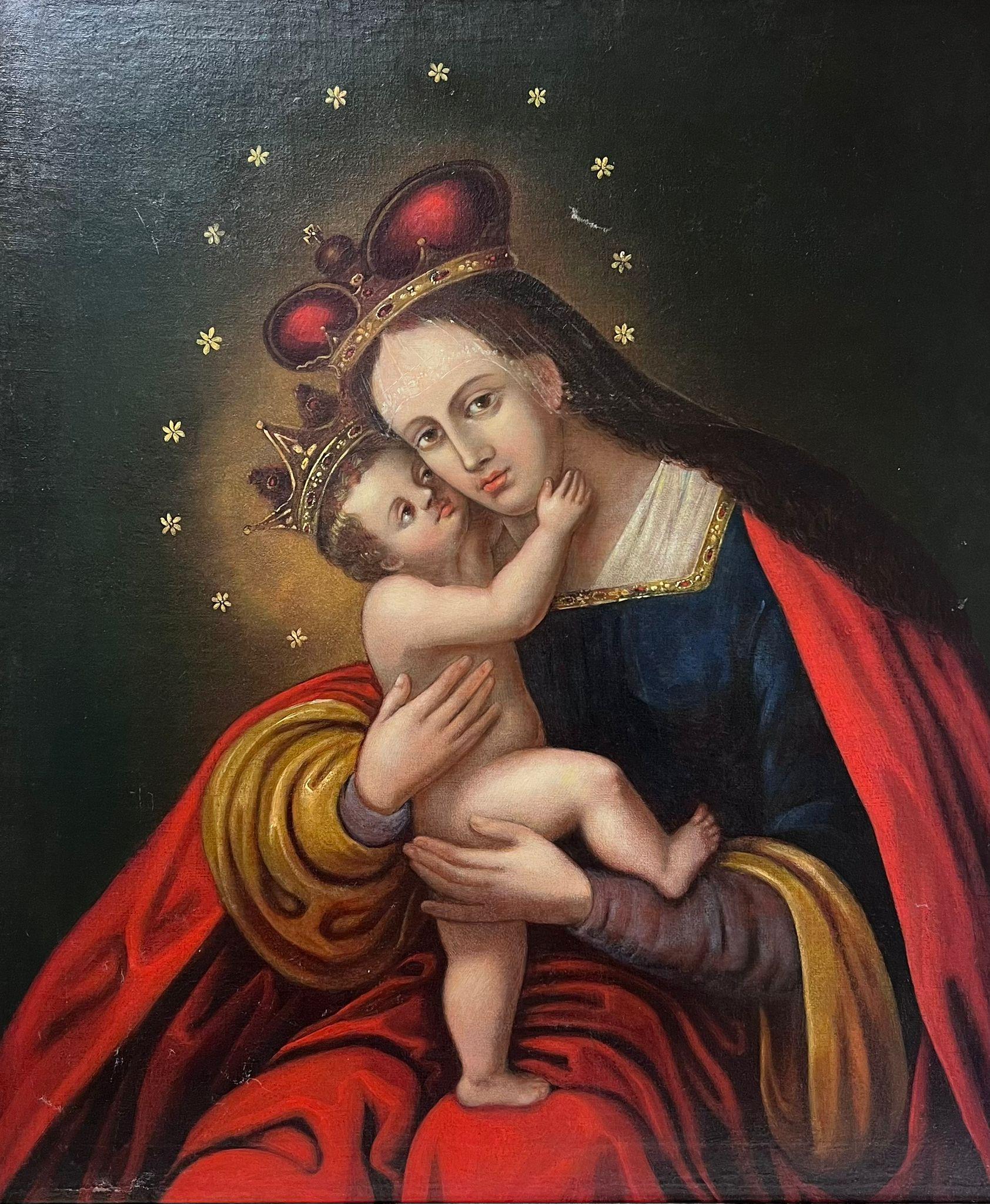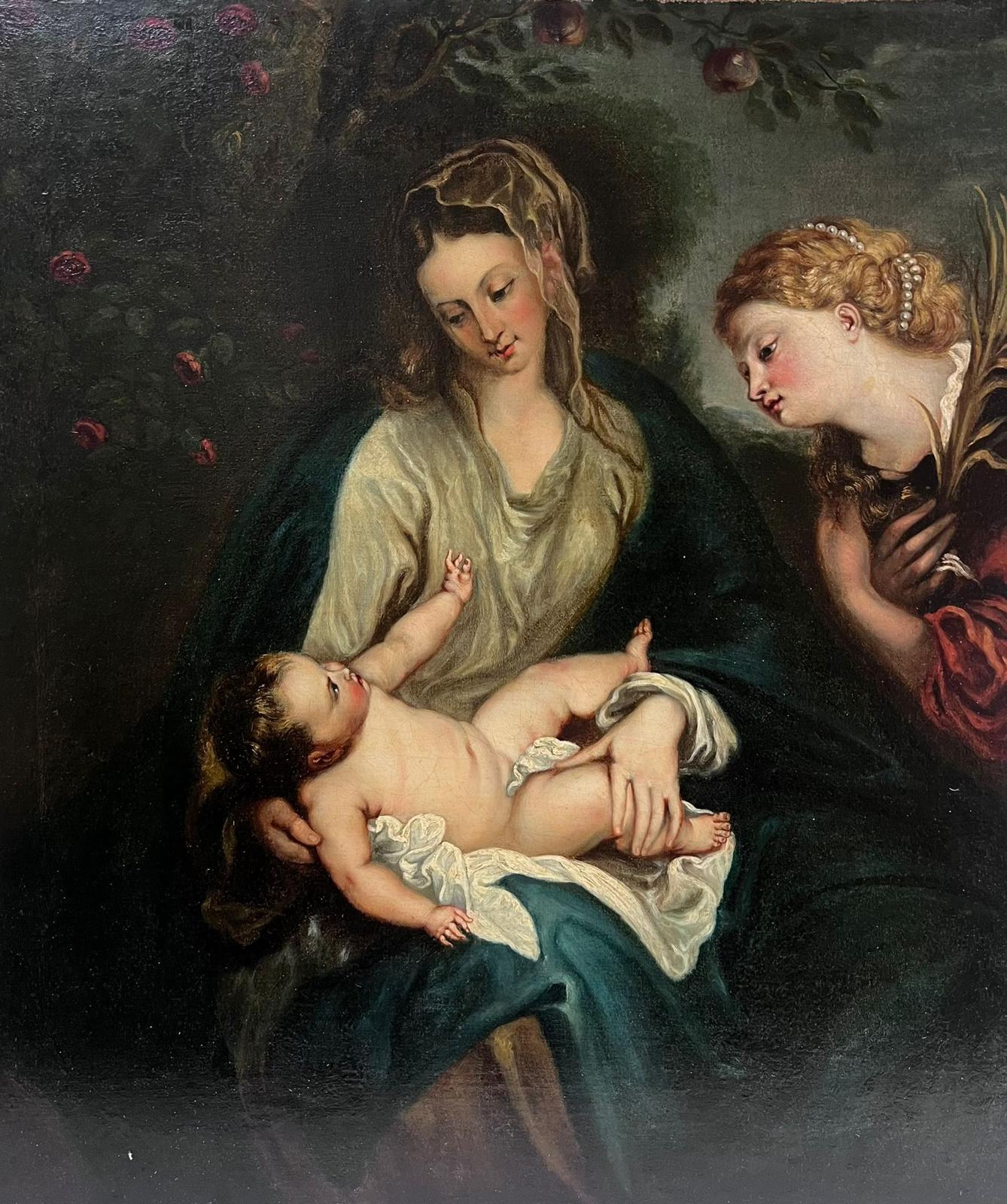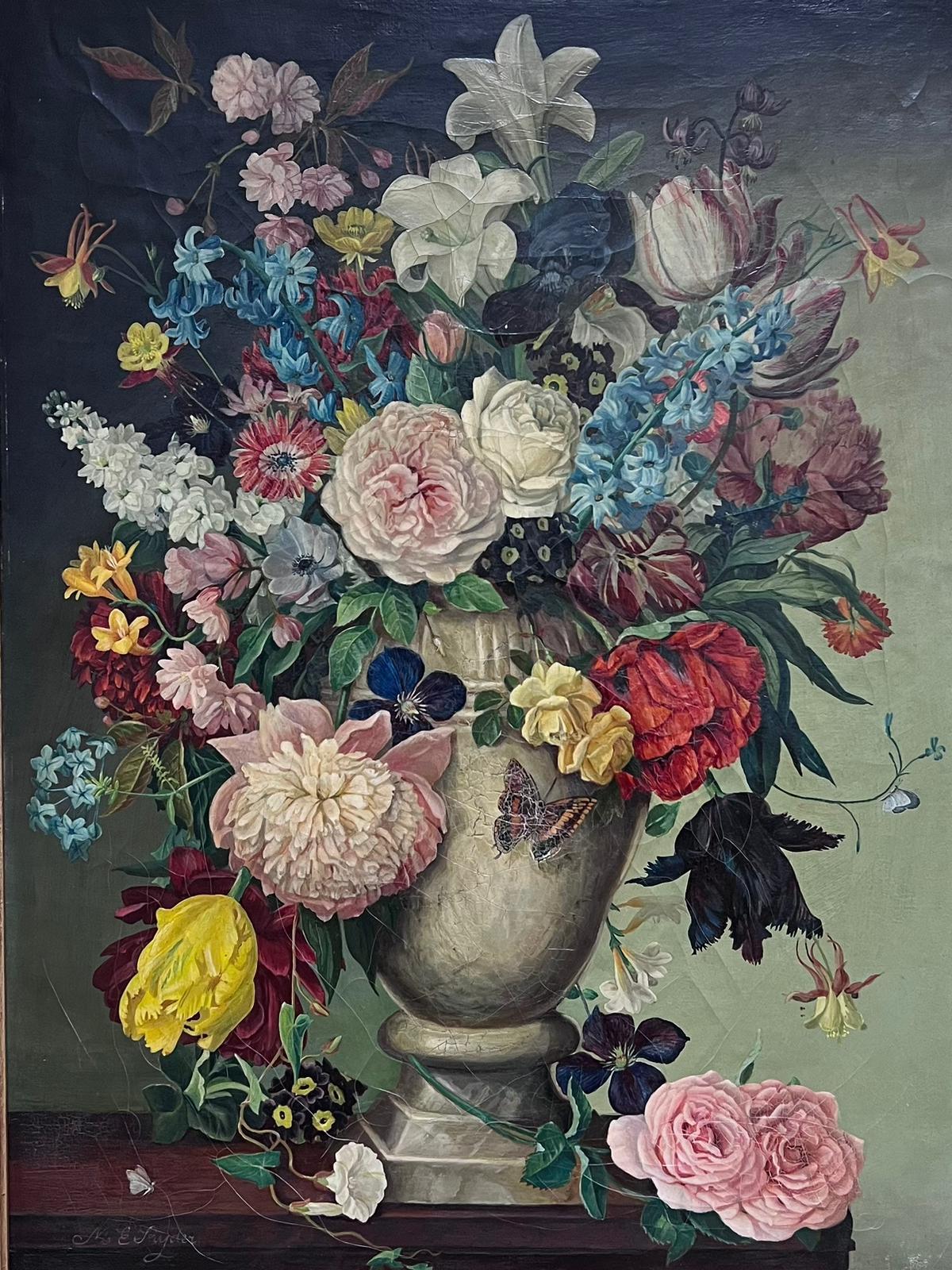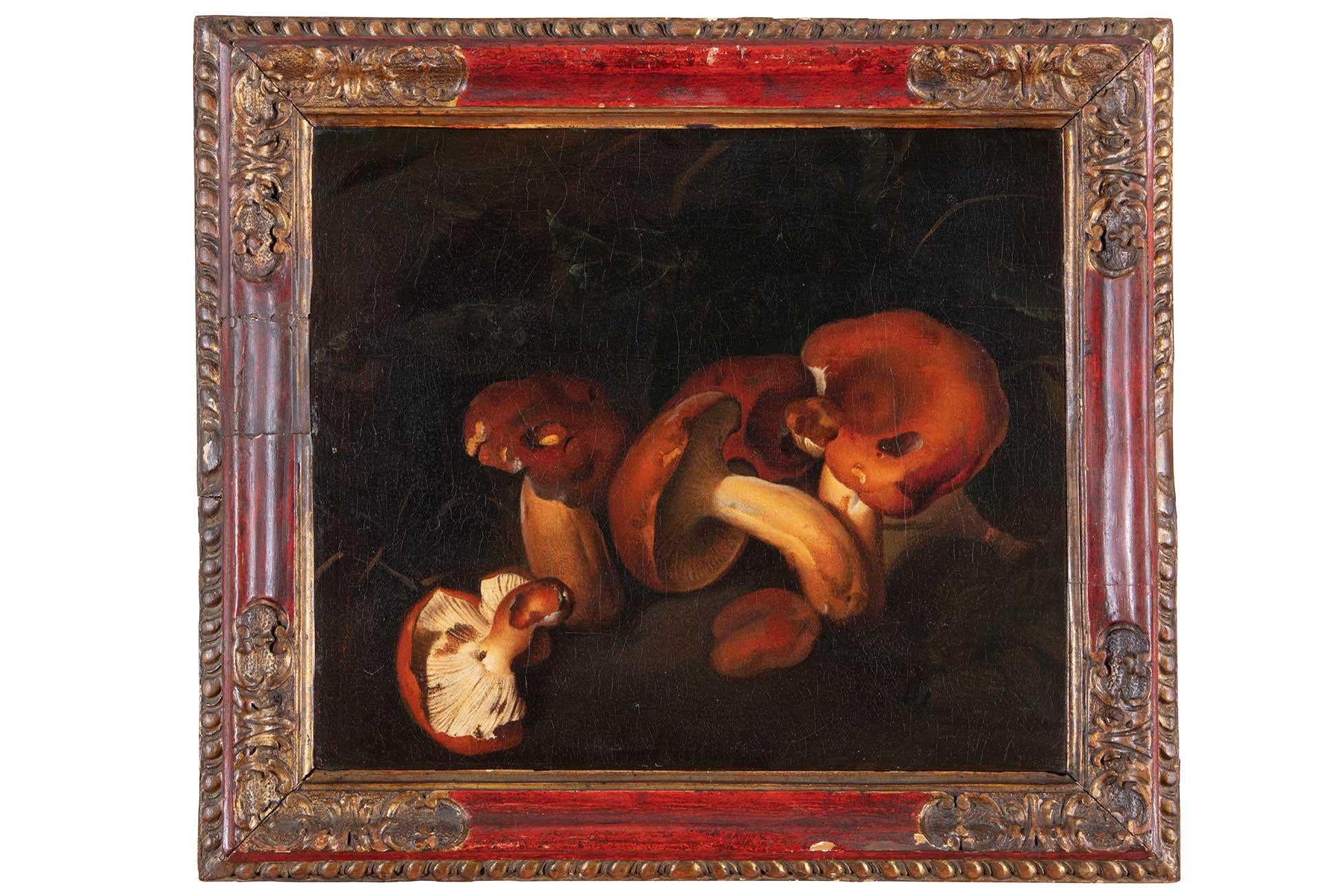Items Similar to Knight Van Douw Paint Oil on canvas Old master 17/18th Century Flemish Art Italy
Want more images or videos?
Request additional images or videos from the seller
1 of 16
Knight Van Douw Paint Oil on canvas Old master 17/18th Century Flemish Art Italy1690-1750
1690-1750
About the Item
After Simon Johannes van Douw (Antwerp c. 1630 - c. 1677)
The stop of a traveler on horseback near a post station
Oil painting on canvas
45 x 55 cm
In frame cm. 55 x 65
In this pleasant painting, depicting a knight parked near a post station, the Flemish tradition is based on a strong Italianizing sensitivity, especially by observing the setting and its peculiar brightness.
The mixture of genres and the particular style of execution make it easy to trace the authorship back to a Nordic author but active in Rome, or strongly influenced by the style in vogue in the Eternal city, between the seventeenth and eighteenth centuries: we are referring, in in particular, to a follower of the Antwerp Simon Johannes van Douw.
The chromatic elegance and refinement with which he outlines the figures are typical aspects of his painting.
The scene takes place outside a cottage, probably a post office for travelers, where a modest family divides the tasks by assisting the knights. We see a young boy who hands water to the horse before he sets off again, the father is preparing to feed him with straw and the mother who instead takes care of the little son.
The Italian reminiscences, evident in our painting, have been absorbed by many Northern European authors such as Nicolaes Berchem, Philips Wouwerman or Johannes Lingelbach, all inspired by the leader Pieter van Laer, documented in Rome from 1625 to 1639 and considered the founder of the current of bamboccianti.
It is not known if Simon Van Douw visited our Peninsula: the few certain biographical data indicate that in 1655 and 1656 he was documented as an independent teacher in Antwerp, where he probably spent most of his life and with him Carel de Fonteyn was trained and Pieter van Bloemen. However, a trip to Italy cannot be excluded, even if there were not a few graphic examples or paintings that the artists could access and be inspired by, just think of Philips Wouwerman who owned countless drawings by van Laer.
The painting, in excellent condition, has a professionally executed relining.
Equipped with authenticity expertise (FIMA)
.
For any further information you are welcome to contact us freely.
Professional and insured shipping, carried out under our supervision.
- Creation Year:1690-1750
- Dimensions:Height: 21.66 in (55 cm)Width: 25.6 in (65 cm)
- Medium:
- Movement & Style:
- After:Simon Johannes van Douw (Antwerp c. 1630 - c. 1677) (1630 - 1677, Belgian, Flemish, Holland)
- Period:
- Condition:
- Gallery Location:Riva del Garda, IT
- Reference Number:1stDibs: LU98817956042
About the Seller
4.8
Platinum Seller
These expertly vetted sellers are 1stDibs' most experienced sellers and are rated highest by our customers.
Established in 2017
1stDibs seller since 2018
201 sales on 1stDibs
Typical response time: <1 hour
- ShippingRetrieving quote...Ships From: Riva del Garda, Italy
- Return PolicyA return for this item may be initiated within 7 days of delivery.
Auctions on 1stDibs
Our timed auctions are an opportunity to bid on extraordinary design. We do not charge a Buyer's Premium and shipping is facilitated by 1stDibs and/or the seller. Plus, all auction purchases are covered by our comprehensive Buyer Protection. Learn More
More From This SellerView All
- Coastal See Landscape Antoniani Paint 18th Century Old master Oil on canvas ArtLocated in Riva del Garda, ITFrancesco Antoniani (Milan 1700/1710 - Turin 1775) workshop Fantasy coastal view with boats and figures Oil on canvas 56 x 138 cm. - framed 71 x 153 cm. Excellent condition This f...Category
18th Century Old Masters Paintings
MaterialsOil
- Diana Albani Mythological Paint Oil on canvas 17th Century Old master Italy ArtLocated in Riva del Garda, ITDiana and her nymphs surprised by Actaeon Francesco Albani (Bologna 1578 - 1660), workshop of oil on canvas 62 x 75 cm. framed 72 x 84 cm. (period frame) The proposed painting, de...Category
17th Century Old Masters Paintings
MaterialsOil
- De Wit Flowers Still life Paint Oil on canvas 18th Century Flemish Cupids ArtLocated in Riva del Garda, ITJacob De Wit (Amsterdam, 1695 - 1754) attributable/ workshop Pair of Cupids with Garland of Flowers Oil on canvas 91 x 103 cm. - Framed 104 x 115 cm. Provenance: Christie's (London, Old master Painting 12.12.1996) lot 82 This magnificent composition depicts two cupids holding a garland of flowers, placed on a fine architecture with bas-reliefs and masks, presumably the top of a fountain. One of the two cupids sympathetically holds a part of it with his hands, while his head turns towards the viewer; the second cupid, on the other hand, must have clumsily broken the thread holding its end, and is sitting sullenly with a torch and a tear streaking his chubby cheek. The work, given its stylistic features and compositional taste, can be attributed to the Flemish artist Jacob de Wit (Amsterdam, 1695 - 1754), or to an artist from his workshop, with his typical triumphal and opulent style, which reveals clear influences from Rubens and Van Dijck, but also from Gerard de Lairesse...Category
18th Century Old Masters Paintings
MaterialsOil
- Portrait Woman Princess Diziani Paint 18th Century Oil on canvas Old master ArtLocated in Riva del Garda, ITGaspare Diziani (Belluno 1689 - Venice 1767) Portrait of a Young Princess (Salome?) Oil on canvas 42 x 33 cm Framed 70 x 63 cm A charming portrait of a beautiful young woman with ...Category
18th Century Old Masters Paintings
MaterialsOil
- Perroneau Portrait Lady Woman Paint Oil on canvas 18th Century Old master FrenchLocated in Riva del Garda, ITJean-Baptiste Perroneau (Paris, 1715 – Amsterdam, 1783) Portrait of a lady Oil on oval canvas 60 x 50 cm. - In frame 77 x 66 cm. Work accompanied by expertise: Raffaelle Colace (Cremona), Ferdinando Arisi Reference bibliography: d’Arnoult, Dominique (2014) Jean-Baptiste Perronneau, c 1715-1783, un portraitiste dans l’Europe des Lumières Excerpt from the expertise of Dr. Colace: This refined portrait of a lady is a perfect example of the style of Jean-Baptiste Perroneau, a very talented French painter, whose most beautiful works are located, just like this one, between the fifth and sixth decades of the eighteenth century. "Perroneaeu is more naturally colored than La Tour, the est, in the peinture de poussière colorée, tout plein de tons clairs, frais, presque humides": this is how his brothers wrote about him in La Maison d...Category
18th Century Old Masters Paintings
MaterialsOil
- Battle Horsemen Landscape Graziani Paint Oil on canvas 17th Century Old masterLocated in Riva del Garda, ITFrancesco Graziani, known as Ciccio Napoletano (active in Naples and Rome in the second half of the 17th century) Battle with clash of horsemen Oil on canvas 95 x 130 cm In period ...Category
17th Century Old Masters Paintings
MaterialsOil
You May Also Like
- Portrait of a ManLocated in New York, NYProvenance: with Leo Blumenreich and Julius Böhler, Munich, 1924 Dr. Frederic Goldstein Oppenheimer (1881-1963), San Antonio, Texas; by whom given to: Abraham M. Adler, New York, un...Category
16th Century Old Masters Portrait Paintings
MaterialsOil, Panel
- Pair of Italian 18' century Paintings with GardensLocated in Rome, ITPair of Italian 18' century paintings , oil on canvas with Venetian Palace gardens , antiques sculptures and various figures . Measurements with f...Category
Mid-18th Century Old Masters Landscape Paintings
MaterialsOil
- Pair of Exceptional Italian 18th Century Still-Life PaintingsLocated in Rome, ITThis pair of excellent Italian still life oil on canvas with flowers and fruit with classical ruins on the background and colored drapes create harmony of the composition. Notable ...Category
Early 18th Century Old Masters Still-life Paintings
MaterialsOil
- Madonna and Child with the Infant Saint John the BaptistLocated in New York, NYInscribed, reverse: Fr Brina Provenance: Private Collection, New Jersey. Francesco Brina was one of the “Studiolo” painters, responsible for the panel of Neptune and Amphitrite in F...Category
16th Century Old Masters Paintings
MaterialsOil, Wood Panel
- Portrait of a GentlemanLocated in New York, NYCircle of Jacques-Louis David (French, 18th Century) Provenance: Private Collection, Buenos Aires Exhibited: “Art of Collecting,” Flint Institute of Art, Flint, Michigan, 23 November 2018 – 6 January 2019. This vibrant portrait of young man was traditionally considered a work by Jacques-Louis David, whose style it recalls, but to whom it cannot be convincingly attributed. Rather, it would appear to be by a painter in his immediate following—an artist likely working in France in the first decade of the nineteenth century. Several names have been proposed as the portrait’s author: François Gérard, Louis Hersent, Anne-Louis Girodet (Fig. 1), Theodore Gericault, and Jean-Baptiste Wicar, among others. Some have thought the artist Italian, and have proposed Andrea Appiani, Gaspare Landi...Category
18th Century Old Masters Paintings
MaterialsCanvas, Oil
- Portrait of an Artist (possibly a Self-Portrait)Located in New York, NYProvenance: Bradley Collection. Private Collection, Upperville, Virginia. Literature: Katlijne van der Stighelen and Hans Vlieghe, Rubens: Portraits of Unidentified and Newly Identified Sitters painted in Antwerp, Corpus Rubenianum Ludwig Burchard, vol. 19, pt. 3, London and Turnhout, 2021, under cat. no. 189, p. 161, and fig. 75. This painting had previously been considered to be by an anonymous Tuscan painter of the sixteenth century in the orbit of Agnolo Bronzino. While the painting does in fact demonstrate a striking formal and compositional similarity to Bronzino’s portraits—compare the nearly identical pose of Bronzino’s Portrait of a Young Man in the Metropolitan Museum of Art (Fig. 1)—its style is completely foreign to Italian works of the period. That it is painted on an oak panel is further indication of its non-Italian origin. This portrait can in fact be confidently attributed to the Antwerp artist Huybrecht Beuckelaer. Huybrecht, the brother of Joachim Beuckelaer, has only recently been identified as the author of a distinct body of work formerly grouped under the name of the “Monogrammist HB.” In recent studies by Kreidl, Wolters, and Bruyn his remarkable career has been delineated: from its beginnings with Joachim in the workshop of Pieter Aertsen; to his evident travels to Italy where, it has been suggested, he came into contact with Bronzino’s paintings; to his return to Antwerp, where he seems to have assisted Anthonis Mor in painting costume in portraits; to his independent work in Antwerp (where he entered the Guild of Saint Luke in 1579); and, later to his career in England where, known as “Master Hubberd,” he was patronized by the Earl of Leicester. Our painting was recently published by Dr. Katlijne van der Stighelen and Dr. Hans Vlieghe in a volume of the Corpus Rubenianum, in which they write that the painting “has a very Italian air about it and fits convincingly within [Beuckelaer’s] oeuvre.” Stighelen and Vlieghe compare the painting with Peter Paul Ruben’s early Portrait of a Man, Possibly an Architect or Geographer in the Metropolitan Museum of Art, in which the sitter holds a compass and wears a similarly styled doublet (Fig. 2). Huybrecht both outlived and travelled further afield than his brother Joachim, who made his career primarily in Antwerp. Whereas Joachim was the main artistic inheritor of their uncle and teacher, Pieter Aertson, working in similar style and format as a specialist in large-scale genre and still-life paintings, Huybrecht clearly specialized as a painter of portraits and was greatly influenced by the foreign artists and works he encountered on his travels. His peripatetic life and his distinctly individual hand undoubtedly contributed to the fact his career and artistic output have only recently been rediscovered and reconstructed. His periods abroad seem to have overlapped with the mature phase of his brother Joachim’s career, who enrolled in the Antwerp Guild of Saint Luke much earlier than his brother, establishing himself as an independent painter in 1560. Joachim’s activity was confined to the following decade and half, and his latest work dates from the last year of his life, 1574. Our portrait was likely produced in the late 1560s, a dating supported by the dendrochronological investigation performed by Dr. Peter Klein, which established that it is painted on an oak panel with an earliest felling date of 1558 and with a fabrication date of ca. 1566. This painting presents a portrait of an artist, almost certainly Huybrecht’s self-portrait. The young sitter is confidently posed in a striking patterned white doublet with a wide collar and an abundance of buttons. He stands with his right arm akimbo, his exaggerated hands both a trademark of Huybrecht and his brother Joachim’s art, as well as a possible reference to the “hand of the artist.” The figure peers out of the painting, interacting intimately and directly with the viewer, as we witness him posed in an interior, the tools and results of his craft visible nearby. He holds a square or ruler in his left hand, while a drawing compass...Category
16th Century Old Masters Paintings
MaterialsOil, Panel
Recently Viewed
View AllMore Ways To Browse
Documental Art
Art Set Canvas
Old Italian Artist
European Masters Paintings
Van C
18th Century Italian Art
Outline Art
Old European Painting
17 Century Painting
Mixture Art
Old European Paint
Oil On Canvas Old Masters
Old Master Scene
Art Flemish
18th C Italian
18th And Older Paintings
18th Century And Older Paintings
17 Century Oil
